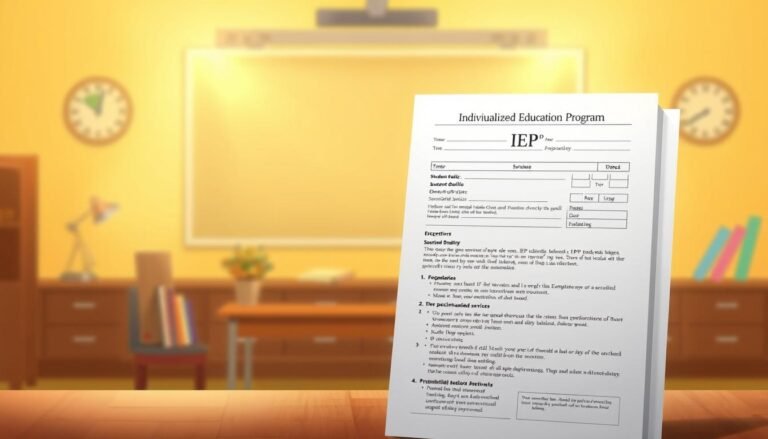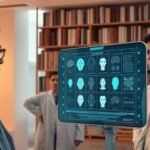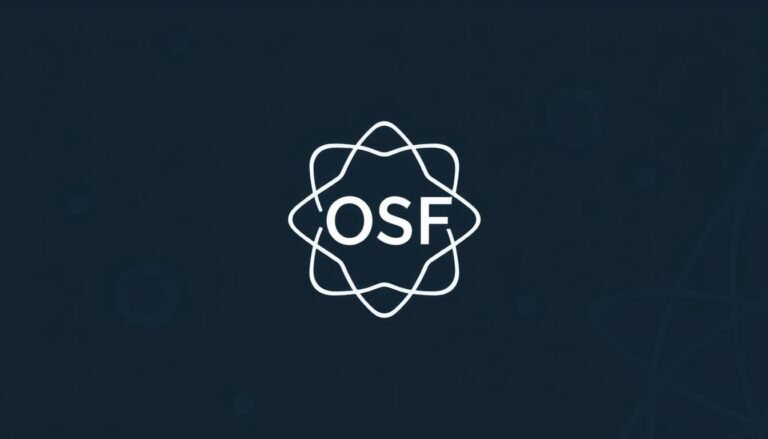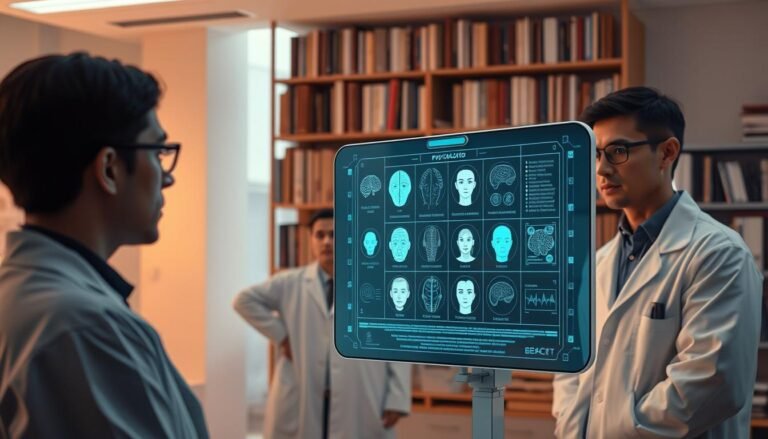Navigating Language Learning: The Ultimate Guide for Students with Learning Disabilities
Introduction
In today’s increasingly interconnected world, the ability to communicate across languages is more vital than ever. For students, language learning can open doors to new cultures, enhance career opportunities, and foster personal growth. However, students with learning disabilities often encounter unique challenges that can make this journey daunting. Navigating Language Learning: A Guide for Students with Learning Disabilities aims to shed light on these challenges while providing practical strategies to empower students to succeed. This article delves into the nuances of language acquisition and offers valuable insights for students, educators, and parents alike.
Understanding Learning Disabilities in Language Learning
Learning disabilities encompass a variety of conditions that affect how individuals process information. From dyslexia to auditory processing disorders, these challenges can influence reading, writing, and comprehension abilities. Recognizing these difficulties is crucial for successful language learning.
Common Learning Disabilities
| Disability | Description | Impact on Language Learning |
|---|---|---|
| Dyslexia | Affects reading and language processing. | Trouble decoding words and understanding text. |
| Dysgraphia | Impacts writing skills and fine motor control. | Difficulty with writing and spelling. |
| Dyscalculia | Affects the ability to understand numbers and math. | Challenges with language-related math problems. |
| Auditory Processing Disorder | Difficulty processing auditory information. | Challenges in understanding spoken language. |
| Nonverbal Learning Disorder | Trouble understanding social cues and expressions. | Challenges in conversational language skills. |
Recognizing these disabilities is the first step in navigating language learning successfully. Understanding the specific nature and challenges of each disability can help educators tailor their teaching strategies.
Creating an Inclusive Learning Environment
An inclusive learning environment is foundational for language success, especially for students with learning disabilities. Here are key strategies to foster inclusivity:
1. Differentiated Instruction
- What is it? Tailoring teaching methods to accommodate individual learning needs.
- Why is it essential? Different students grasp language concepts in unique ways. For example, visual learners may benefit from graphic organizers, while auditory learners might thrive through oral practice.
2. Use of Technology
- Apps & Software: Applications such as Duolingo or Quizlet can provide interactive exercises while allowing students to learn at their own pace.
- Speech-to-Text Tools: These tools can assist students who struggle with writing, enabling them to express their thoughts verbally.
3. Multi-Sensory Approaches
- Engaging multiple senses can reinforce language learning. For instance, using flashcards with images, sounds, and tactile objects (like blocks or sandpaper letters) can help solidify understanding.
4. Small Group Work
- Group activities can provide peer support, allowing students to learn from each other while practicing language skills together. For instance, practicing conversational skills in small, supportive groups can foster confidence.
Case Study: Emma’s Journey with Dyslexia
Emma, an eight-year-old student diagnosed with dyslexia, struggled significantly with reading and writing in her language class. After her teacher implemented a multi-sensory approach that included visual aids and hands-on activities, Emma’s confidence blossomed. She began using tools like audiobooks and dedicated software to aid her learning, allowing her to engage with texts at her own pace. Over time, Emma not only improved her language skills but developed a newfound love for storytelling, showcasing the transformative impact of tailored strategies in navigating language learning.
Curriculum Adaptations
Adapting curriculum content, resources, and assessment methods is vital for supporting students with learning disabilities effectively.
1. Flexible Assessment Methods
- Alternatives to Traditional Tests: Allow students to demonstrate knowledge through creative projects, presentations, or oral exams instead of written tests.
2. Simplified Materials
- Using simplified texts and glossaries can aid comprehension. Highlighting key vocabulary and providing definitions can also enhance understanding.
3. Structured Learning
- A clear and organized lesson plan helps students anticipate what to expect. Breaking lessons into manageable segments can prevent overwhelm.
Case Study: Alex’s Progress with Auditory Processing Disorder
Alex, a fifteen-year-old high school student, faced challenges in understanding spoken language due to auditory processing disorder. His teacher began providing lecture notes in advance and supplemented verbal instructions with written guidelines. By employing a structured learning approach, Alex could review materials at his own pace. This strategy enabled him to focus better during class discussions, significantly improving his participation and comprehension in language tasks.
Building Language Skills through Daily Practice
Regular practice is essential for mastering a new language. Here are ways to integrate language practice into everyday life:
1. Language Immersion
- Encourage students to watch movies, listen to music, or read books in the target language. Immersion provides context, which aids retention.
2. Language Exchange Programs
- Pair students with peers who are native speakers of the language they are learning. This can encourage conversational practice and cultural exchange.
3. Routine Conversations
- Incorporate language use into daily activities, such as discussing dinner plans in the target language or labeling household items.
Case Study: Maria’s Language Exchange Experience
Maria, a college student with nonverbal learning disorder, participated in a language exchange program. She paired with a native Spanish speaker, which facilitated practical conversation practice. Through this experience, Maria gained not only language proficiency but also improved her understanding of social cues, ultimately fostering confidence in her communicative abilities. Maria’s journey highlights the value of real-world practice in navigating language learning.
Leveraging Support Systems
Support systems are crucial for both students and educators in navigating language learning. Here are key players involved:
1. Teachers and Specialists
- Educators trained in special education can provide tailored techniques and resources. For example, they can implement the Orton-Gillingham approach for students with dyslexia.
2. Parents and Caregivers
- Parents play a vital role in reinforcing learning at home. Encouraging reading habits, practicing vocabulary, or engaging in language games can all contribute to progress.
3. Peer Support
- Peer mentoring programs can be beneficial, enabling students to learn from others who understand their challenges and can offer support.
Case Study: James’ Support System in High School
James, diagnosed with dysgraphia, experienced difficulty expressing himself in writing. His English teacher partnered him with a peer mentor who shared similar challenges. Utilizing each other’s strengths, they collaborated on writing assignments, which not only improved James’ skills but also created a supportive friendship. This case exemplifies how fostering a supportive community can bridge gaps in language learning.
The Role of Mindset and Motivation
A growth mindset can profoundly affect a student’s experience in language learning. Encouraging resilience and a belief in their abilities can lead to greater success.
1. Celebrate Small Wins
- Acknowledge progress, no matter how minor. Celebrating achievements boosts motivation.
2. Set Realistic Goals
- Help students set achievable, incremental goals. For instance, mastering a specific set of vocabulary words can be more manageable than tackling an entire chapter.
3. Create a Positive Affirmation Culture
- Encourage students to develop a set of positive affirmations related to language learning. Reminding them they are capable can shift perspectives from fear of failure to excitement for opportunity.
Case Study: Sophia’s Mindset Shift
Sophia, a seventh grader with dyslexia, often felt disheartened when facing language tasks. Her teacher implemented a system of goals and affirmations. Each week, they would review her accomplishments and celebrate them, fostering a sense of capability. This change in mindset not only transformed how Sophia engaged with language learning but also allowed her to tackle challenges with newfound confidence.
Conclusion
Navigating language learning can be a fulfilling journey for students with learning disabilities when approached thoughtfully. By understanding specific challenges, creating inclusive environments, adapting curricula, and leveraging support systems, we can transform obstacles into opportunities. As we support these students, we create spaces where they can thrive, embrace new languages, and discover their unique voices.
It’s essential to remember that every student’s journey is different. Embrace the individual paths, cultivate resilience, and amplify all voices within the language-learning community. Through adaptability and compassion, we can empower these students to excel in their language studies and beyond.
FAQs
1. What are effective strategies for teaching language to students with learning disabilities?
Consider differentiated instruction, visual aids, multi-sensory techniques, and the use of technology to engage students with diverse learning profiles.
2. How can parents support their child’s language learning?
Encourage regular practice, seek resources that align with their learning preferences, and maintain open communication with educators about challenges and progress.
3. Are there specific resources for students with dyslexia learning a new language?
Yes, resources like specialized software, audiobooks, and apps that focus on phonics can be helpful for students with dyslexia.
4. How can teachers assess language learning in students with disabilities?
Employ flexible assessment methods, including creative assignments, oral presentations, and peer assessments to provide a holistic view of a student’s understanding.
5. Can students with learning disabilities become fluent in a second language?
Absolutely! With the right support, tailored strategies, and consistent practice, many students with learning disabilities can achieve fluency in a second language.
By thoughtfully implementing the insights shared in this guide, educators, parents, and stakeholders can catalyze a transformative experience in navigating language learning for students with learning disabilities, empowering them to embrace and thrive in their multilingual journeys.
















